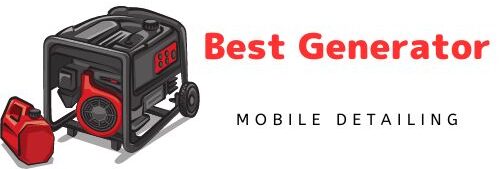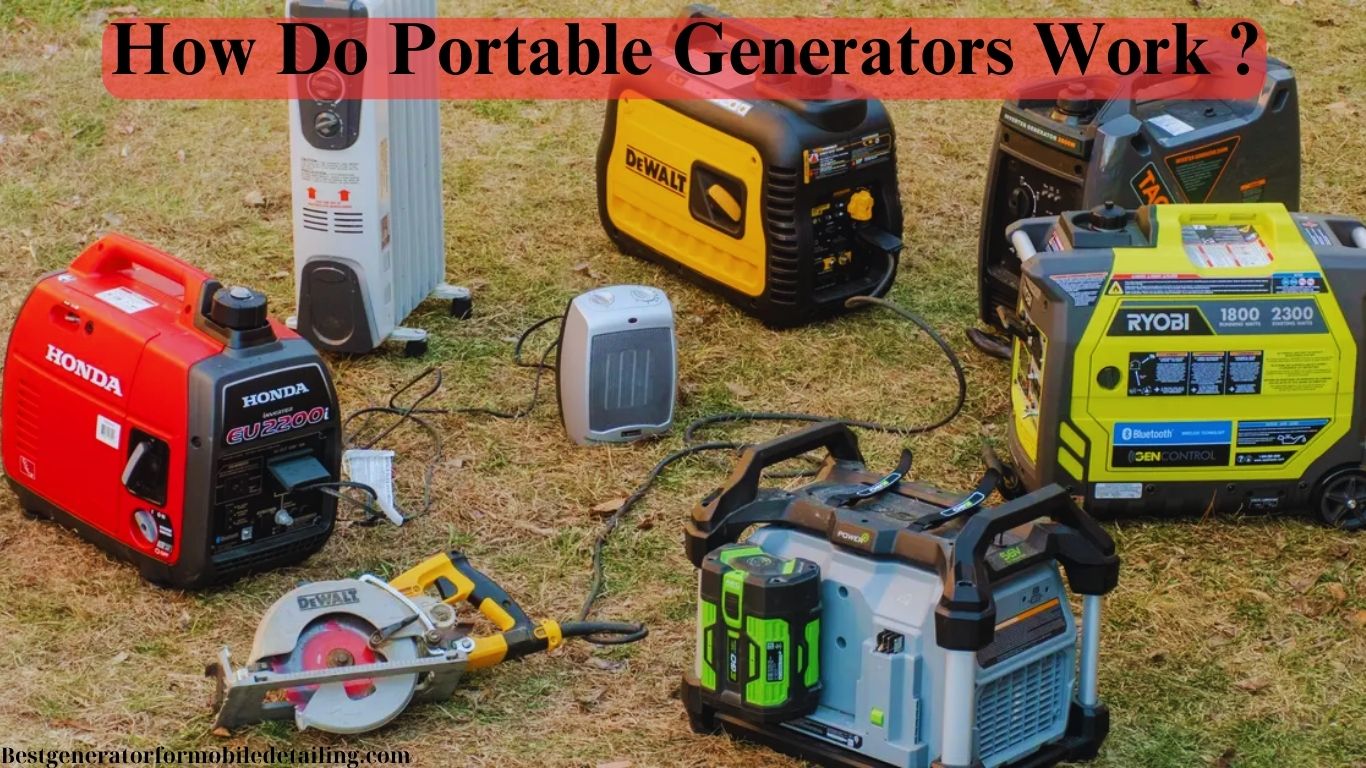Portable generators are versatile, mobile units that generate electricity in places without access to power. They convert fuels like gasoline, diesel, or propane into electrical energy, proving crucial in emergency situations and advantageous for leisure activities. But how does a generator work? Whether you’re new to using a generator, or well-experienced, there are a few things you need to know to operate it safely.
Definition and Purpose: A portable generator is an alternative power source commonly used during power outages or in isolated locations. It ensures that critical appliances and systems remain operational without the main power grid.
Overview of Components: Essential components of a portable generator include the engine, alternator, fuel system, and controls. These parts collectively generate and manage the electrical output to meet the needs of connected devices.
Importance in Emergency and Recreational Use: In emergencies, portable generators provide vital power to sustain lighting, refrigeration, and heating systems. They offer power for recreational activities like camping, tailgating, and other outdoor events, thus increasing comfort and convenience when away from standard power sources.
Basic Working Principle
Portable generators are designed around a straightforward principle: converting fuel into electricity. This conversion process starts when fuel activates an engine linked to an alternator.
- Conversion of Fuel to Power: Fuel is used by the engine to generate mechanical energy. This energy is subsequently conveyed to the alternator, which serves as the generator’s core component.
- Role of the Engine: The engine’s performance heavily influences the generator’s efficiency and capability. It is critical in determining how effectively the generator transforms fuel into mechanical energy.
- Generation of Electrical Energy: Mechanical energy from the engine is converted into electrical energy by the alternator. This conversion is achieved through an electromagnetic process where mechanical force causes electrons to move through a circuit, thereby generating electricity.
Portable generators are invaluable for providing dependable power in areas without grid electricity, offering crucial energy solutions for emergencies and recreational uses. Their user-friendly design enables access to electricity whenever and wherever needed, enhancing security and independence.
Parts of a Portable Generator
A portable generator works like a mini-electric power station, changing mechanical energy into electrical energy. Most models use gas because it’s a cheap, convenient way to start this process, but diesel or propane units can also be found.

Five major components of a portable generator include:
- Internal Combustion Engine: This is the workhorse for your generator. It injects fuel through the chamber, creating a spark that converts it into mechanical energy.
- Alternator: This is where the magic is done. The alternator comprises two constituent parts that convert mechanical energy into electric power. A magnetic field is excited around a set of wound coils by a rotating part, often called a “rotator,” creating a surplus of electrons.
- Starter: It is the part that starts your generator. It may be run from a DC battery one time or be a pull cord mechanism another time.
- Fuel Tank: An average portable generator usually holds a gas, diesel, or propane fuel tank. Make them accessible to initial fuel, but remember—these fuel sources don’t last forever. For example, a lawnmower would not work if one left it sitting too long in the garage, so you should exercise your generator regularly. Ensure you run your generator twice a year to get your fuel ready when needed.
- Outlets: The number and configuration of outlets depend on your portable generator’s make and model. This, together with the larger price you will likely have spent on your generator, usually means that you will be afforded more outlet-type combinations.
How Do Portable Generators Work?
The following explains point by point how the portable generator works:
- Engine Fuel: This generator model uses gasoline, propane, or diesel fuel to provide the engine with energy. The machine stores such fuel in its tank.
- Starting the Engine: Recoil start or electric start, based on model. Running the engine will drive the alternator.
- Alternator: The alternator is the most important part of the generator. This is the part that actually converts the mechanical energy emanating from an engine into electric energy. It consists of a rotor and a stator that generates an alternating current (AC).
- Voltage Regulation: The generator’s voltage regulation is solely an emanation from a regulator that assures uniformity in all output voltages, irrespective of the engine speed or the generator loading. This is key in providing power to home electronics and appliances.
- Power Distribution: The electrical power developed from the alternator is distributed through the generator’s outlets, including the 120-volt or 240-volt outlets.

Benefits of Portable Generators for Mobile Detailing
These are just a few of the many reasons a portable generator will help you in your business as a mobile detailer.
- Convenience: These generators are portable and very convenient, as they can be placed in various places for mobile detailing.
- Reliability: These also ensure the power supply of the most reliable sources of electric energy in a few cases where one might be challenged to find electric outlets.
- Flexibility: The portable generator can power various equipment, from a simple vacuum cleaner and buffer to lights and compressors.
Top Portable Generators for Mobile Detailing
If one had to choose a suitable generator for his mobile detailing business, he would certainly have a long list to choose from. Below are some of the very best in the market:

- Westinghouse iGen2200 This compact generator provides 2200 running watts, making it a suitable choice for mobile detailers who need reliable power for their detailing tools without excessive noise. Its efficiency ensures prolonged operation on a single fuel tank, ideal for a full day’s work.
- Honda EU2200i Designed for efficiency and reliability, the Honda EU2200i offers 2200 watts of stable power, perfect for operating sensitive detailing equipment. Its fuel-saving technology helps mobile detailers manage operating costs while providing dependable power.
- Generac GP2500i Offering 2500 watts, the Generac GP2500i is excellent for mobile detailers who require more robust power for high-demand tools. Its compact design allows for easy transportation and flexible use in various mobile detailing settings, from residential driveways to corporate parking lots.
See more at Best Generator For Mobile Detailing
Choosing the Right Portable Generator for Mobile Detailing
A few of the important points, that you have to factor in mind while selecting a portable generator for your business of mobile detailing, will be as follows:
- Power Output: Make sure that the power output from the generator is enough to match your equipment output.
- Fuel Efficiency: Look for a generator with an engine that works fuel-efficiently to lower costs for both fuel and emissions.
- Noise Level: Consider a generator with a low noise level to avoid disturbance or improve working conditions.
Conclusion
Portable generators are fully versatile, and reliable in power supply, which could prove an ideal solution for detailers on the move. Understanding how it operates and selecting the best for the business assures safe and efficient working. A portable generator—a piece of equipment to make human tasks easy- is a must-have for human use if one may be a car detailer whose business involves cars, trucks, or RVs.
Marion Woods is an accomplished generator technology expert with over 15 years of experience, currently serving as the Chief Technology Officer at GenTech Power Solutions. She holds a Master’s degree from MIT and specializes in enhancing generator efficiency and integrating renewable energy sources. Marion is a respected author and speaker in the engineering community, dedicated to pioneering sustainable power solutions.


4 thoughts on “How Do Portable Generators Work ?”